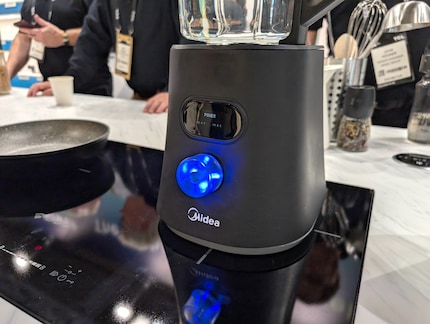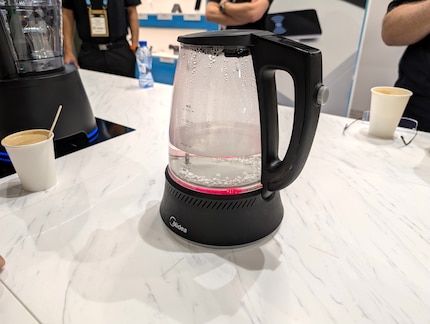
News + Trends
New "Ki" standard announced: powering toasters, blenders and other appliances without cables
by Lorenz Keller

Ki, the new standard for household appliances, is raising many questions. For example, how efficient is the wireless power supply via induction? We got some answers at the IFA tech fair in Berlin.
When the Wireless Power Consortium debuted the new Ki standard in mid-August, many were sceptical. Ki (pronounced like key) is designed to supply power to blenders, toasters, kettles and airfryers via induction instead of cables. While this has the advantage of keeping the induction surfaces cold and safe, the standard also requires special docking areas to be built into kitchens.
Our readers have also criticised the standard across comment sections. Above all, they agreed that the invention was useless and wasted energy.
At the IFA tech fair, I was able to clarify some unanswered questions with the people in charge – and take a look at the technology in person.
Let’s start with the question of energy efficiency. I’m told it reaches 90 per cent at high power. In other words, only 10 per cent of power consumed is lost by induction. However, energy efficiency is poorer at lower power levels. Luckily, the appliances that have been considered so far, such as blenders, kettles and airfryers, tend to require a lot of energy over a short period of time rather than little energy over a longer time. By comparison, wireless charging for smartphones achieves only 70 per cent efficiency.
Next question: where will kitchen appliances be supplied with electricity? Induction hobs will play a central role here, especially to start. Although Ki coils can also be placed directly under kitchen counters made of stone or plastic up to six centimetres thick, this would obviously require a major conversion. Cooktops, on the other hand, can be replaced more quickly and for cheaper.

In principle, any induction hob where you’d normally cook can be used for wireless charging via Ki. This makes sense: appliances such as kettles or airfryers are often used under the extractor hood anyway. That in turn is usually positioned above the hob – and is only the same size as the stove. For people who already place their kitchen appliances on the induction hob and connect them by cable, almost nothing will change. Only the cable will go.
Ki fields with a diameter of 15 or 21 centimetres will have an error tolerance of around four centimetres. When I try it for myself, I simply place the device on top and switch it on. If I remove it, power is also immediately cut off. Neither the underside of the device nor the Ki field are warm or even hot.
Here’s a surprise: besides the Wireless Power Consortium stand at the IFA in Berlin, Ki-kitchen appliances are also on display at Midea. The household appliance giant from China is still relatively unknown here, but it’s one of the most important manufacturers in Asia and the USA. However, some of its products are also available in our range.
I’m mentioning this for a reason: Midea is looking to launch its first devices with Ki by the end of the year. These will include appliances such as kettles, rice cookers, blenders and airfryers as well as induction hobs. There are still prototypes at the trade fair, but they’re probably pretty close to the final product. The bulky designs probably aren’t final, but fit a look that’s common in the USA.

It isn’t yet clear on which markets and with which other partners Ki kitchen appliances will be launched. Same goes for the price: what seems clear is that the new technology will be a bit more expensive than comparable cabled devices.
Have all doubts about the new standard been dispelled? Well, yes and no. The loss of efficiency sounds justifiable. Whether the increased convenience really will be that great depends very much on kitchen situations. In small kitchens with little floor space, an induction hob that also works for appliances could be useful. However, flexibility will also be lost since there’s no power cable. The device won’t work anywhere other than on designated Ki surfaces.
Gadgets are my passion - whether you need them for the home office, for the household, for sport and pleasure or for the smart home. Or, of course, for the big hobby next to the family, namely fishing.
Interesting facts about products, behind-the-scenes looks at manufacturers and deep-dives on interesting people.
Show all